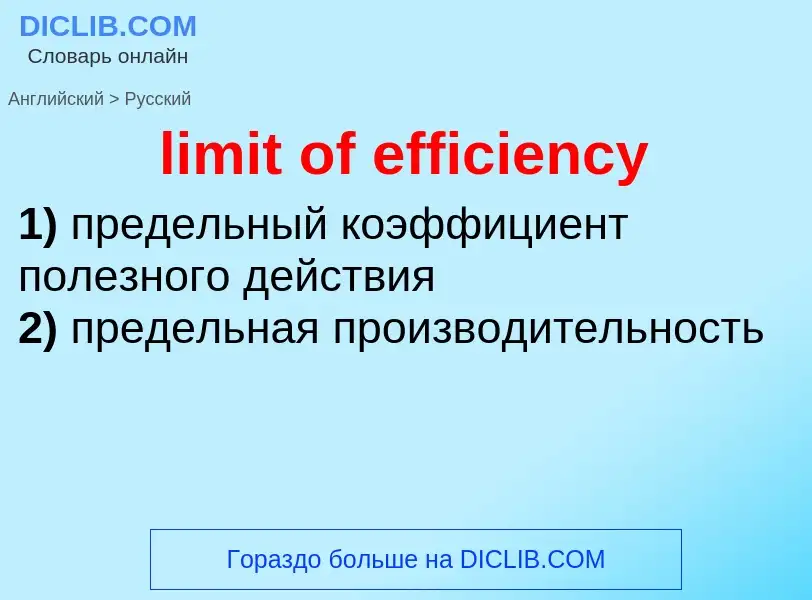Translation and analysis of words by ChatGPT artificial intelligence
On this page you can get a detailed analysis of a word or phrase, produced by the best artificial intelligence technology to date:
- how the word is used
- frequency of use
- it is used more often in oral or written speech
- word translation options
- usage examples (several phrases with translation)
- etymology
limit of efficiency - translation to russian
2) предельная производительность
[di'tekʃ(ə)nlimit]
специальный термин
предел чувствительности
медицина
порог обнаружения
Definition
.
Wikipedia
The photosynthetic efficiency is the fraction of light energy converted into chemical energy during photosynthesis in green plants and algae. Photosynthesis can be described by the simplified chemical reaction
- 6 H2O + 6 CO2 + energy → C6H12O6 + 6 O2
where C6H12O6 is glucose (which is subsequently transformed into other sugars, starches, cellulose, lignin, and so forth). The value of the photosynthetic efficiency is dependent on how light energy is defined – it depends on whether we count only the light that is absorbed, and on what kind of light is used (see Photosynthetically active radiation). It takes eight (or perhaps ten or more) photons to use one molecule of CO2. The Gibbs free energy for converting a mole of CO2 to glucose is 114 kcal, whereas eight moles of photons of wavelength 600 nm contains 381 kcal, giving a nominal efficiency of 30%. However, photosynthesis can occur with light up to wavelength 720 nm so long as there is also light at wavelengths below 680 nm to keep Photosystem II operating (see Chlorophyll). Using longer wavelengths means less light energy is needed for the same number of photons and therefore for the same amount of photosynthesis. For actual sunlight, where only 45% of the light is in the photosynthetically active wavelength range, the theoretical maximum efficiency of solar energy conversion is approximately 11%. In actuality, however, plants do not absorb all incoming sunlight (due to reflection, respiration requirements of photosynthesis and the need for optimal solar radiation levels) and do not convert all harvested energy into biomass, which results in a maximum overall photosynthetic efficiency of 3 to 6% of total solar radiation. If photosynthesis is inefficient, excess light energy must be dissipated to avoid damaging the photosynthetic apparatus. Energy can be dissipated as heat (non-photochemical quenching), or emitted as chlorophyll fluorescence.

